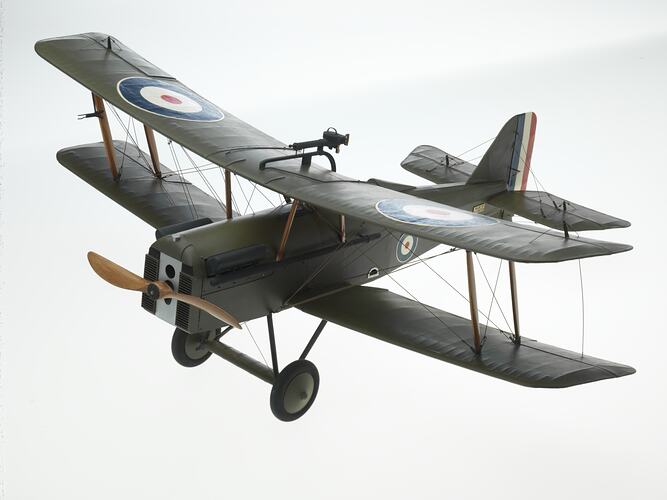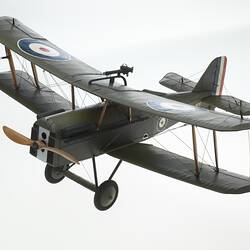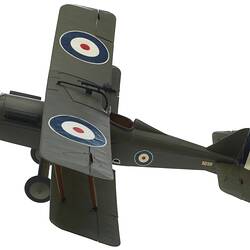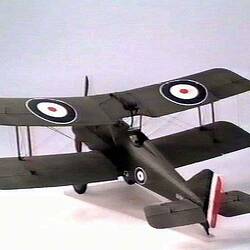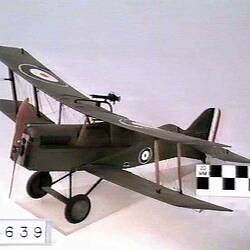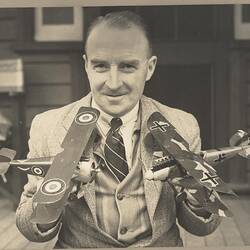Summary
This 1:16 scale model was commissioned by the Museum and built by Harold P. Wood in 1959.
The S.E.5 (Scout Experimental 5) was designed by Henry P. Folland, John Kenworthy and Major Frank Goodden of the Royal Aircraft Factory, Farnborough, England. Based around the new 150 horsepower(112 kW) Hispano-Suiza 8a V8 engine, it provided excellent aerial performance, although the compressed time-frame for testing and prototype development meant that the first production aircraft had a repuation for unreliability. The first of three prototypes flew on 22 November 1916. Two of the prototypes were subsequently lost in crashes due to a weakness in their wing design - with the accident first killing the Royal Aircraft Factory's chief test pilot, Major Frank Goodden, on 28 January 1917. Despite modifications to the design, early production versions of the S.E.5 continued to experience problems before the improved S.E.5a version utilising the 200 h.p. Hispano-Suiza 8b geared engine was introduced in June 1917. The S.E.5a went on to become one of the most successful and widely deployed aircraft of WWI, known in service as an exceptionally strong aircraft capable of diving at very high speed, while its squarer wings also gave much improved lateral control at low airspeeds. Like the other significant Royal Aircraft Factory aircraft designs of WWI (such as the B.E.2, F.E.2 and R.E.8), the S.E.5a was inherently stable making it an excellent gunnery platform, but it was also quite manoeuvrable. It was one of the fastest aircraft of the war with a top level flight speed of 138 mph (222 km/h) at sea level, making it faster than most standard German types it fought in combat. Compared with the contemporary Sopwith Camel design it was a match in speed, though slightly less agile in a tight dogfight, it was regarded as was more stable and had better high-altitude performance. Together with the Camel, the SE.5a was instrumental in regaining Allied air superiority in mid-1917 and maintaining it to the end of World War I.
Physical Description
Wooden model biplane painted olive green with bullseyes coloured blue, white and red on the wings and body section. There is a machine gun mounted in the centre on top of the upper wings.
More Information
-
Collection Names
-
Collecting Areas
-
Acquisition Information
Purchase
-
Manufacturer of Item Modelled
Royal Aircraft Factory, Farnborough, Hampshire, England, Great Britain, 1917-1918
-
Modelmaker
Mr Harold P. Wood, Mornington, Greater Melbourne, Victoria, Australia, 1959
-
Inscriptions
Text, plaque on side of Aeroplane: MADE BY / H.P WOOD
-
Classification
Air transport, Aircraft, Model propeller biplanes - military
-
Category
-
Discipline
-
Type of item
-
Overall Dimensions
410 mm (Length), 505 mm (Width), 195 mm (Height)
-
Model Scale
1:16
-
Keywords
Aircraft, Reconnaissance Aircraft, Military Aircraft, Model Aeroplanes, Scale Models, Wars & Conflicts, World War I, 1914-1918
